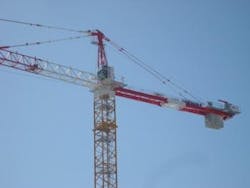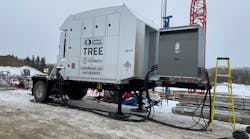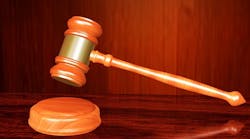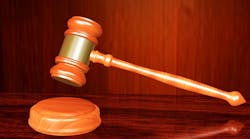There have been three crane accidents recently where wind was a factor.
Although various types of cranes can be at risk during high winds, perhaps the most vulnerable is the tower crane. It certainly grabs attention with spectacular and tragic accidents. Both the vertical and horizontal structures can travel a long way down—forward, backward, or sideways—fast.
The tower crane’s design doesn’t lend itself to wind protection. A small support below has to hold hundreds of feet of stretching steel and changing loads. The experts at Van Doorn Tower Crane Consultants in the U.K. (tower cranes are so popular in Europe that it’s possible to see them constructing single-family homes) have some vital safety tips to share:
After a tower crane has been erected, the operator holds the next key to safety, particularly at shift’s end or during breaks.
“They must make sure that the crane is left with the jib luffed up in parking position if they are using a luffing jib,” says Kenia Cota, Van Doorn’s international sales director. “If they are using a hammerhead or flat top crane, they need to make sure the hook block is brought back to the jib and left slightly away from the cabin. This will ensure that the hook block will not blow in the wind freely and hit the cabin or swing around and injure workers below.”
The crane’s parking brake also plays an important role.
“The crane parking brake should be released and left in free slew when high winds are expected,” Cota says. “For this to be done safely, you must ensure that there is nothing that can make contact with the jib within a 360-degree radius around the crane.
“By leaving the crane in free slew, this allows the slew ring to move freely with the wind and not fight against it,” she says. “If the parking brake is left on and the slew ring is parked in a fixed position, then you risk having the wind blow against the jib and impose loads on the crane it’s not engineered to sustain.”
Cota explains that it’s critical to take into consideration not only the horizontal and vertical loads that a tower crane imposes on the building and foundation, but also the potential wind loadings.
“This is particularly the case when a tower crane must be climbed past freestanding height and must be tied to the building to ensure its stability,” she says.
After high winds, Cota recommends a thorough inspection of the crane, and a max load test to double check for damage.
“The site structural engineer should inspect the tie-in points of the tower crane to the building to ensure that the structural stability of the crane has not been compromised due to additional wind loadings on the crane and building,” Cota says.
Another item to consider is the company sign or banner on the crane—although they are sources of pride and solid marketing tools, they can catch the wind and intensify its effects.
Check with the NCCCO for crane safety information and certification classes, or a local International Union of Operating Engineers facility. They may have helpful information and instruction, as well.




